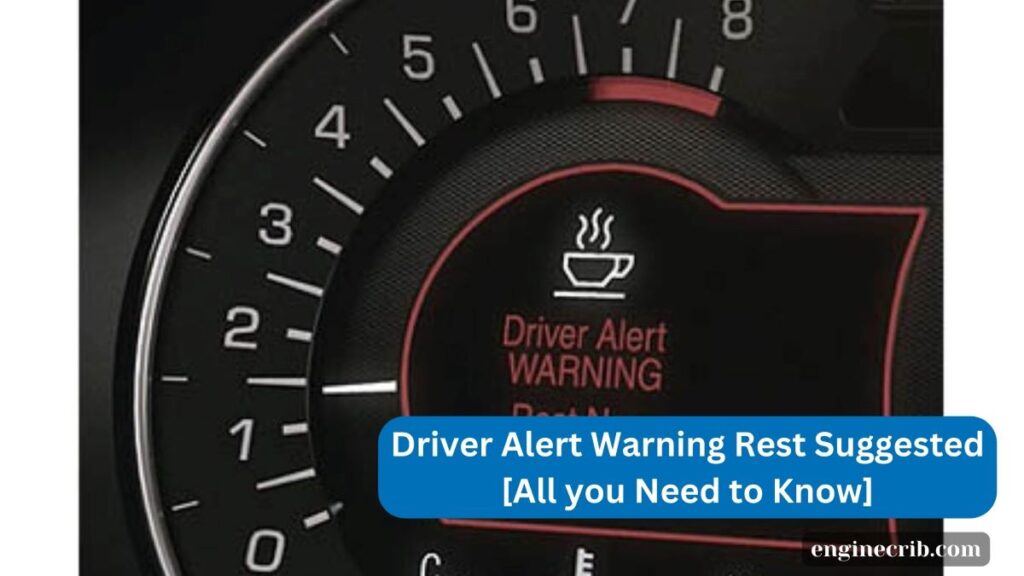The danger of driving while fatigued is a serious one, and it’s a problem affecting thousands of drivers yearly. But what if there was a way to avoid this risk altogether? That’s where Driver Alert Warning (DAW) comes in.
Driver Alert Warning (DAW) systems work by monitoring a driver’s behavior and alerting them if they show signs of drowsiness or fatigue. There are several types of DAW systems, but most of them use sensors to detect changes in the driver’s behavior, such as sudden steering wheel movements or erratic driving.
In this article, we’ll explore the benefits of DAW and why it’s such an important tool for promoting driver safety on the road.

Table of Contents
What is Driver Alert Warning?
Driver Alert Warning (DAW) is a safety system designed to help prevent accidents caused by drowsy or fatigued driving. DAW systems use sensors to monitor a driver’s behavior and detect signs of drowsiness, such as sudden movements or changes in driving patterns.
If the system detects signs of drowsiness, it alerts the driver with an audible alarm, vibration, or warning message, encouraging the driver to take a break or rest.
DAW systems can be found in many modern cars and trucks and are becoming increasingly popular as a way to promote safe driving practices and reduce accidents caused by fatigue.
What Does “Driver Alert Warning Rest Suggested” Mean?
“Driver Alert Warning Rest Suggested” is a message that can appear on your vehicle’s dashboard or infotainment system to alert you that the Driver Alert Warning (DAW) system has detected signs of drowsiness or fatigue and is recommending that you take a break from driving.
The DAW system uses sensors and algorithms to monitor your driving behavior, such as your steering patterns and how often you blink, to detect signs of fatigue or inattention.
If the system detects that, you may be getting tired, it will provide a warning message and suggest that you take a break to rest and refresh yourself.
Ignoring the DAW warning and driving while tired can be dangerous, as it increases the risk of accidents caused by drowsy driving.
How to Activate Driver Alert Warning
The activation process for Driver Alert Warning (DAW) systems can vary depending on the make and model of your vehicle. Generally, DAW systems are activated automatically when you start driving, and they continue to monitor your behavior throughout your trip.
To ensure your DAW system is activated and functioning correctly, you can check your vehicle’s owner manual or consult a dealership or certified mechanic.
In some cases, you may need to adjust the settings for the DAW system to meet your preferences, such as the sensitivity level of the sensors or the type of alert you want to receive.
How to Activate Driver warning Alerts in Different Cars
1. How to Activate Driver Alert Warning in a Ford
To activate a Driver Alert Warning (DAW) in a Ford vehicle, follow these steps:
Activate Driver Alert Warning through the infotainment display screen
- Select the “Driver Assist” option from the menu
- Scroll down to the “Driver Alert” option and select it.
- Turn on the DAW system by sliding the toggle switch to the “On” position.
Vehicle’s SYNC Screen (if equipped)
- Select the Vehicle Settings option from the menu.
- Scroll down to the “Driver Alert” option and select it.
- Toggle the switch to the “On” position.
- Customize the DAW settings to your preference. For example, you may be able to adjust the sensitivity of the system or set the duration of alerts.
2. How to Activate Driver Alert Warning in a Volkswagen
Follow these simple steps to enable or disable the Driver Alert System in your Volkswagen Golf
- Start by turning on your car and looking at the screen display.
- Enter the “Car” menu and then go to “Settings.”
- Once you’re in the “Settings” menu, select “Driver Assistant.”
- You will see the “Driver Alert System” option. Select “Active” to enable the function or “Inactive” to disable it.
Importance of Driver Alert Warning
Here are some of the reasons why a Driver Alert Warning (DAW) is important:
1. Reducing Accidents
This system can help reduce the number of accidents caused by drowsy or fatigued driving. By alerting drivers when they are showing signs of drowsiness, DAW systems can help prevent accidents that can result in injury or even death.
2. Promoting Safe Driving Practices
DAW systems promote safe driving practices by encouraging drivers to take breaks when tired or fatigued. By reminding drivers to take care of themselves, DAW systems can help prevent accidents caused by human error.
3. Increasing Driver Awareness
It increases driver awareness of their own behavior while driving. By monitoring the driver’s behavior and providing alerts, DAW systems can help drivers recognize when they are tired or distracted and need a break.
4. Improving Overall Road Safety
DAW systems contribute to improving overall road safety by promoting safe driving practices and reducing accidents caused by fatigue. By helping drivers stay alert and focused on the road, DAW systems can help prevent accidents and keep everyone on the road safe.
5. Saving Lives and Reducing Costs
The system helps to save lives and reduce costs associated with accidents caused by drowsy driving. By preventing accidents, DAW systems can help reduce medical expenses, insurance claims, and other costs associated with accidents.
Read: Slide Door Light on Honda Odyssey [What it Means]
Final Thoughts
The Driver Alert Warning (DAW) system is an important safety feature that can help prevent accidents caused by drowsy driving.
By monitoring your driving behavior and providing alerts if signs of fatigue or inattention are detected, the DAW system can help keep you and other drivers on the road safe.
It’s essential to activate the DAW system in your vehicle and follow its recommendations to take a break and rest if you receive a warning message.